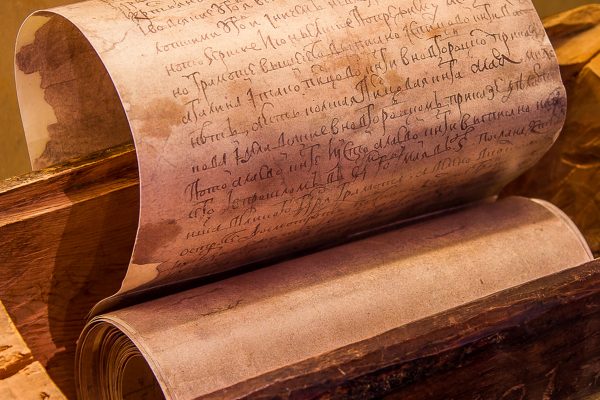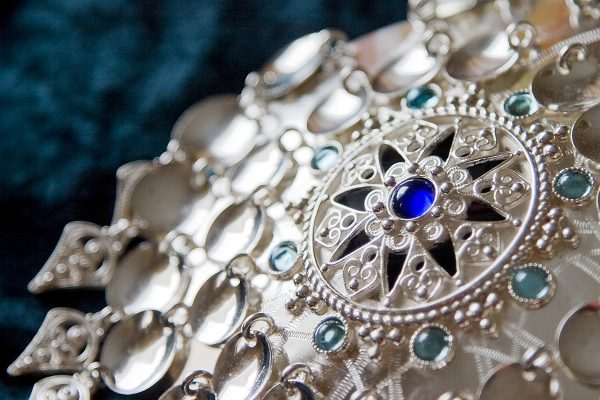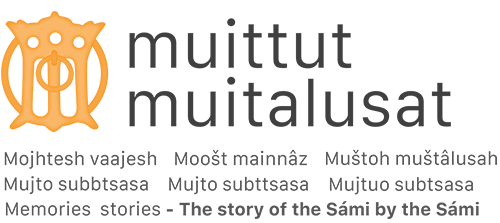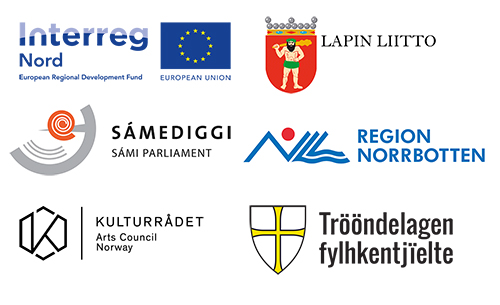Muittut, muitalusat is a co-operation project between the Sámi Museum Siida, Saemien Sijte (the South Sámi Museum and Cultural Centre), Ájtte (the Swedish Mountain and Sámi Museum), the University of Lapland and the Luleå University of Technology LTU. The project is financed by the Interreg Nord programme and the national funders the Regional Council of Lapland (Finland), Trøndelag County Authority (fylkeskommune), the Arts Council Norway, the Sámi Parliament (Norway) and Region Norrbotten (Sweden).
Our project aims to develop and use a new kind of methodology, a Sámi exhibition language. This methodology will be a valuable and helpful part of the indigenisation process of Sámi museums in the Nordic countries, as it will help the Sámi museums to display updated information on the Sámi from the perspective of today’s Sámi in their exhibitions. Combining the knowledge in our communities and museums will help us have our own voice heard as one people, and new technology will help us to deliver the message to Sámi societies and to our other guests. The Sámi people live in four different nation-states, and historical and political changes and turbulences have affected our lives for centuries. For us there are no borders, and it is natural for us to co-operate with other Sámi museums.

This methodology, a Sámi exhibition language, is fundamentally based on the way in which Sámi culture evolves in time and space and in how this can be realised in the exhibitions. The way Sámi people see and identify themselves has changed over time, and this must be visible in the content that is displayed in the Sámi museums. Earlier, the Sámi have been pictured as mere survivors in the Arctic, while the contemporary image is that of active agents who affect their own destiny in a Sámi cultural landscape. This is reflected in two Sámi concepts and values: birgen, bierrgim, bearkadidh, piergim, biergiđ, piʹrǧǧummuš (managing, surviving, the ability to recover or cope with difficulties) and gulahallan, guládallam, govlesadtedh, leđe vuáruvaikuttâsâst/addiittâllâđ, kulstõõllâd (understanding others, co-operation, belonging to a range of networks); furthermore, there is the main idea of cultural continuity and traditional knowledge that is capable of renewal. Continuity is a basic value: people must treat nature and society in a sustainable way, also for the benefit of the future generations.

Sámi Museum Siida and Saemien Sijte are in the process of building new spaces and renewing their exhibitions while Ájtte Museum seeks to include new element in their exhibitions. The current exhibitions are frozen in time as the technology does not allow changes and updates; hence they neither strengthen the present Sámi identity nor convey actual and appropriate information for the museum visitors. In order to offer a current narrative, there is a need for a new museum language that will remain flexible, convertible and easily updated so that the exhibitions become living examples of Sámi identity of each era. This is crucial for the Sámi because Sámi Museums are one of the very few public forums where we Sámi can present the culture in our own terms and study and convey our self-image through documentation with the idea of ‘Past generations live in us.’
Muittut, muitalusat aim to contribute in creating interesting experiences, helping visitors to learn and comprehend the information offered by the museums. Sámi identity is not static but changes with time, influenced by societal, cultural and other factors. Sámi museum exhibitions – whether permanent or temporary – should similarly strive to be living, up-to-date, easily updated and easily convertible. The project brings together Sámi museums from northern and southern Sápmi, providing a platform for sharing the best museum practices and developing together new Sámi museum language. This brainstorming will be further strengthened by involving universities from Finland and Sweden as well as other important stakeholders to create something unique. The objective is to represent Sámi culture, our memories and our stories, interpreted by Sami artists through art and music, and create thus a universal understanding beyond words.
Sámi Museum Siida is the project coordinator and responsible for the management and the coordination for Muittut, muitalusat. The project management structure comprises Project Manager Eeva-Kristiina Harlin and a steering group. The steering group members are Sari Valkonen, Director of Sámi Museum Siida (chair), Eeva-Kristiina Harlin, Project Manager, Sámi Museum Siida (secretary), Pirita Näkkäläjärvi (Maria Sofia Aikio), from Sámi parliament, Pirjo Seurujärvi from Metsähallitus, Jonna Häkkilä, (Tuija Hautala-Hirvioja) from University of Lapland, Christer Åhlund from Luleå Technical university, Elisabeth Pirak Kuoljok from Ájtte and Birgitta Fossum from Saemien Sijte.

